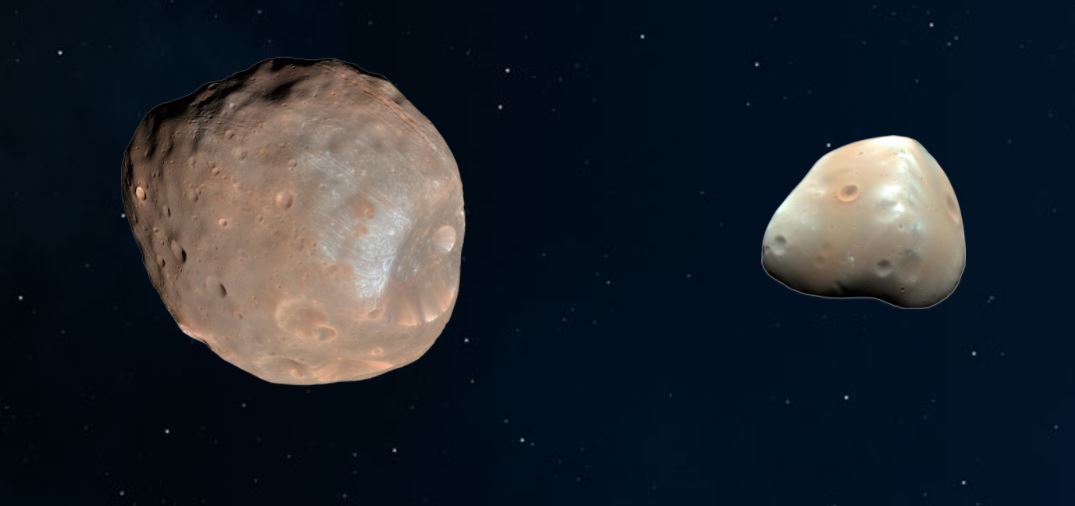
This is the story behind the doomed neighbours of the red planet
Ok, they’re considerably bigger than the potatoes that you might find in your local supermarket. But, if you magnified those potatoes you would have the perfect comparison for the two moons, Phobos and Deimos, that circle the dusty red planet in our solar system. This article will explore exactly how far we have come in our exploration of these distant little moons.
Phobos and Deimos are tiny moons in comparison to our own moon
23km and 6km wide respectively, to be exact, with a gravitational pull not even strong enough to give them a spherical form. For this reason, they have a potato-like appearance. It is believed that they were once part of the asteroid belt, until they were kicked out by the gravity of Jupiter and towards the orbit of Mars.
The two little potato-shaped moons were discovered by Asaph Hall in 1877. We might have thought that by this time the Romans and Greeks would have little influence over the name of the colourful objects in our sky, but Hall decided, in tribute, to name them Phobos and Deimos, after the sons of the Greek god of war.
The doomed moons of Mars

Phobos is closer to Mars than Deimos and is making its way towards the planet at a rate of 2 meters per year. Not something to worry about for now, but in 50 to 100 million years it may crash into Mars. This would destroy any life that may come to exist on the planet during that time. There is however, a chance that the gravitational pull of Mars could rip Phobos into millions of pieces. You could consider this to be a natural defence by the planet. There is evidence of debris impact on Phobos.
Less than 6000 miles from Mars, it is believed that explosions on the red planet have thrown debris into the sky. This caused craters and avalanches to form in the moon’s surface. Not content with being a lifeless wasteland, the red planet seems intent on destroying anything that comes too close.
Unlike Phobos, Deimos is slowly saying farewell to Mars. The smaller of the two moons, Deimos will leave Mars within the next few hundred million years. Once it has been cast off into space, Mars will go from a planet with two moons to a planet with none. Maybe that’s what happens when a planet takes its moons for granted.
Will we ever visit Phobos and Deimos?
The two seemingly insignificant and unimpressive moons actually contain important information for us on planet Earth. Confirming exactly how the potatoes formed will allow us to understand how planets formed around our sun. Not least, it will solve one of the more enduring mysteries to the planetary science committee.
There have been attempts to explore the moons of Mars already. In 2011, two spacecraft were sent by Russia, but failed miserably in their mission. One of them became stuck in Earth’s orbit and crashed back down onto home soil.
The Mars Moons eXploration mission of 2024 aims to visit the two moons in order to collect samples that will be returned to earth. Perhaps then, we can discover exactly where these two little potatoes originated from. Until that happens, the misshapen moons remain unknown and mysterious in our magnificent solar system.
